#Art and Language
Explore tagged Tumblr posts
Text

#the red crayola#the red krayola#art and language#black snakes#the jam#ben annesley#mayo thompson#allen ravenstine
8 notes
·
View notes
Text

ICI ÊTRE LÀ-BAS, 2024
(HERE TO BE OVER THERE, 2024)
Lettrage jaune sur vitrail
Art dans les Chapelles, Pontivy
#bernard calet#stained glass#art contemporain#language#drawing#words#chapel#artiste on tumblr#art and language#vitrail
23 notes
·
View notes
Text

“Oh Well”, 2013, acrylic on canvas

The above paintings are from Mel Bochner‘s 2024 exhibition ALL SALES FINAL! at TOTAH, in NYC. Sadly, the artist passed away this month at the age of 84.
Bochner was a conceptual artist with a career filled with works that challenged expectations. His work incorporated photography, installation pieces, and later the text-based paintings for which he became well known.
Border Crossings Magazine has an excellent interview with the artist from 2018 where he discusses his work and process, his early days writing about art, his famous Working Drawings and Other Visible Things on Paper Not Necessarily Meant To Be Viewed As Art from 1966, and more.
Below are a few excerpts-
On the text paintings and the viewer-
The “Thesaurus” paintings are a lot about voice, about who’s speaking and the tone of one’s voice. I don’t think it is anything that painting has dealt with very well. It’s one of the places where colour comes in because colour sets a tone, in an aural as well as visual sense. The viewer becomes a reader, a very different sense of involvement. The words grab the viewer. Once they see there is something to read, they’re liable to stop and read it. They engage with the painting in a different way, because seeing and reading take place in separate parts of the brain.
On where the words come from-
So is the process one in which you’ll get a word in your head from reading or overhearing something, and that will be the ignition for that particular painting?
I like that “point of ignition,” but you never know when it’s going to happen. Many years ago when both my kids were living at home, one was in high school and one was in grade school, listening to them talk was like living in a language factory. I would hear stuff and say, “Wow, that is a really interesting word, I can use that.” Sometimes I would overhear a conversation on the subway or read something in the newspaper and that would get me thinking. The words could come from anywhere. What I was trying to understand is how we talk now.
And here he discusses his use of color in the text works, specifically in Oh Well (2010)-
Is all language necessarily a palimpsest, so that when you enter its terrain, you’re always entering previously occupied spaces?
Yes. The thing with synonyms, which Roget himself first said, is that no two words ever mean the same thing. You’re moving through different shades and approximations of meaning. That was something I was thinking about in regards to the colour in the “Thesaurus” paintings. I never used the same colour twice in the same painting. They all had to shade off somehow, like synonyms. I would make a drawing recording every colour that went into every letter, and there are a couple of hundred letters in each painting. For example, Oh Well (2010). “Oh” was in Old Holland yellow green, “well” was in Williamsburg brilliant yellow, plus pale grey and cadmium yellow medium. “That’s” was in Gamblin quinacridone violet with a touch of Holbein grey and white. “Goes” was Williamsburg persian rose pure. Some of them got really complicated. “To” was Holbein light red earth and Old Holland yellow ochre deep and Williams cadmium orange and Gamblin Portland grey medium and Old Holland warm grey light plus white, plus Williams quinacridone maroon. This was my shopping list.
He also discusses his interest in philosophy and in this section he discusses Edmund Husserl‘s idea of brackets and applies it to creating art-
…When you can’t figure something out in math, you set it aside by putting it in brackets. You haven’t eliminated it; you haven’t discarded it; it’s just there waiting for you. So as I started reducing my work more and more, I put all those things aside: “Right now I can’t deal with colour; I can’t deal with shape; I can’t deal with surface. So what can I deal with; what can I do that feels authentic to me?” In the beginning it was just drawing numbers or writing words. Then as time went on I wanted to add things back in to increase the range and depth of the work.
To take them out of the brackets?
To move them into the equation. As you get older you build up a body of work and gradually give yourself more permission. I always thought that if Mondrian in his most classical year—1923 or 1924—if somebody had shown him Victory Boogie Woogie (1944), unfinished with all that masking tape, and said, “You’re going to paint this in 20 years,” he would have said, “You’re out of your mind, there’s no way I’m going to do that. It’ll never happen.” Or he would have had a heart attack and dropped dead on the spot. So if you’re fortunate to work for a certain length of time, there’s a trajectory but it’s not direct. If you want to continue making things that surprise you, you have to go against your own sensibility and see where the contradictions will take you.
The deferral that is contained within the brackets is a lovely notion. Does it mean that the act of being an artist is an engagement with contingency?
Yes, but there are always limits to contingency. Look, if you come into your studio, day after day, year after year, you want to have the feeling by the end of that day that you might have done something you’ve never seen before, something unexpected. If it’s the same old thing, then what are you doing? The place to be is where you don’t know where your work is going. If it doesn’t go anywhere today, that’s okay, too, because maybe it will tomorrow.
#Mel Bochner#Conceptual Art#Art and Language#David Totah#Art and Writing#TOTAH#Art with Words#Border Crossings Magazine#Drawing#Drawings#Edmund Husserl#Math and Art#Philosophy#Photography#Visual Language#Working Drawings#NYC Art Shows#Text Paintings#Art#Painting#RIP
2 notes
·
View notes
Text
bro i LOVE indigenous fusion music i love it when indigenous people take traditional practices and language and apply them in new cool ways i love the slow decay and decolonisation of the modern music industry
#but also !!!!!!! indigenous people who make traditional music and release it !!!!! just as cool !!! equally as valid !!!!!!!!!!! indigenous#people who just release in english/the main language of their country are also very cool !!!!!! more love and focus on the art of#indigenous ppl !!!!!!!!#anyway i have been on a big Inuit pop/indie fusion kick lately#i've also been meaning to do a deep dive into the Blak (indigenous australian) music scene#anyway ! :3#music#words of wyrm
56K notes
·
View notes
Text
There's this sort of anthropomorphizing that inherently happens in language that really gets me sometimes. I'm still not over the terminology of "gravity assist," the technique where we launch satellites into the orbit of other planets so that we can build momentum via the astounding and literally astronomical strength of their gravitational forces, to "slingshot" them into the direction we need with a speed that we could never, ever, ever create ourselves. I mean, some of these slingshots easily get probes hurtling through space at tens of thousands of miles per hour. Wikipedia has a handy diagram of the Voyager 1 satellite doing such a thing.

"Gravity assist." "Slingshot." Of course, on a very basic and objective level, yes, we are taking advantage of forces generated by outside objects to specifically help in our goals. We're getting help from objects in the same way a river can power a mill. And of course we call it a "slingshot," because the motion is very similar (mentally at least; I can't be sure about the exact physics).
Plus, especially compared to the other sciences, the terminology for astrophysics is like, really straightforward. "Black hole?" Damn yeah it sure is. "Big bang?" It sure was. "Galactic cluster?" Buddy you're never gonna guess what this is. I think it's an effect of the fact that language is generally developed for life on earth and all the strange variances that happen on its surface, that applying it to something as alien and vast as space, general terms tend to suffice very well in a lot more places than, like... idk, botany.
But, like. "Gravity assist." I still can't get the notion out of my head that such language implies us receiving active help from our celestial neighbors. They come to our aid. We are working together. We are assisted. Jupiter and the other planets saw our little messengers coming from its pale blue molecular cousin, and we set up the physics just right, so that they could help us send them out to far stranger places than this, to tell us all about what they find out there.
We are assisted.
And there is no better way to illustrate my feelings on the matter than to just show you guys one of my favorite paintings, this 1973 NASA art by Rick Guidice to show the Pioneer probe doing this exact thing:

"... You, sent out beyond your recall, go to the limits of your longing. Embody me. ..."
Gravity assist.
#space#astronomy#astrophysics#language#paintings#the antidote to despair is awe#the quote is from the poem ''go to the limits of your longing'' by rainer maria rilke and translated by joanna macy#druid speaks#the thing that got me thinking about this was watching Animation VS Physics tbh#because the whole gravity assist section is so epic in scale and the music swells and its so. Romantic in the art movement sense#i mean the whole thing is epic like that. but seeing the term ‘’gravity assist’’ pop up did something to my brain specifically
17K notes
·
View notes
Text












"You just have to look closely."
#anyway how we're feeling with this last episode folks#my art#tadc#fanart#the amazing digital circus#art#i had been meaning to draw this comic for a while but never had the energy for it#i got a burst of inspiration from the episode#tadc fanart#tadc kinger#tadc queenie#kinger x queenie#tadc episode 3#tadc spoilers#kinger tadc#kinger#btw sorry for any gramatical mistakes english aint my first language my bad#comic#tadc comic#i don't know if kinger and his wife knew each other before the circus but going with the yes option just because
29K notes
·
View notes
Text








(open pages for better image quality)
the moment I heard elphaba's delivery of "there's a girl i know..." in i'm not that girl i knew i had to draw this comic, i strongly recommend listening to it while you read for the full experience!
this comic is a companion to this piece (which was inspired by glinda's delivery of the same line in the i'm not that girl reprise).
pages 1-4 are from elphie's pov, pages 5-8 are from glinda's.
prints of individual pages: 1 2 3 4 5 6 7 8
flower meanings in order of appearance:


#wicked#gelphie#(girl who has so many thoughts about i'm not that girl)#even jonathan bailey said i'm not that girl is a queer anthem. if nobody gets me i know he does#had to hold myself back from doing an animatic to the entire song (i don't have time)#i don't usually work in b&w so i was a little nervous but i'm really proud of how this comic turned out :')#it was a labor of love of many many weeks drawing this in between work#updated with prints for all 8 individual pages since a few people asked♡#might compile it as a little pdf zine when i have time for anyone who wants to keep it in higher resolution to re-read it#elphaba#glinda#gelphie fanart#wicked fanart#wlw#sapphic#lesbian#wlw art#sapphic art#lesbian art#comic#artists on tumblr#glinda x elphaba#elphaba thropp#glinda upland#galinda upland#i'm not that girl#flower meanings#language of flowers
21K notes
·
View notes
Text
Cuteness Aggression
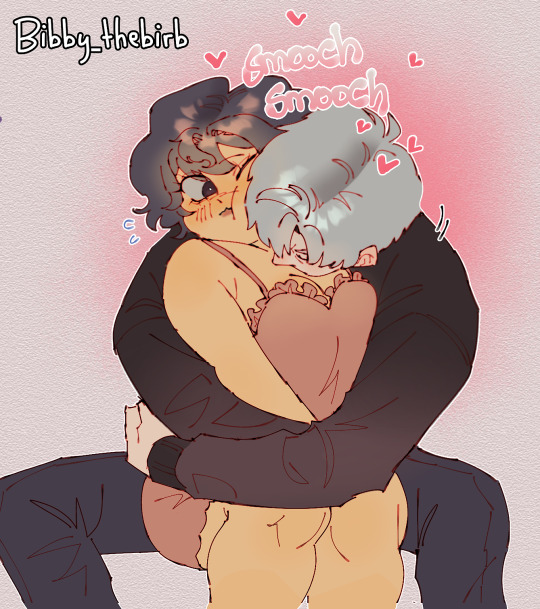

#his love language is biting#my art#love and deepspace#like a cat#everytime he sees mc he just wanna squeeze her#ohh im gonna love this card sm#lads#lnds#sylus#lads sylus#qin che#love and deepspace sylus#l&ds sylus#chubby mc#sylus love and deepspace#恋与深空#fanart#doodle#art#lnds sylus#sylus x mc#sylus fanart#lads mc#sylus x you#lads x reader#artwork#degital art#artists on tumblr
9K notes
·
View notes
Text

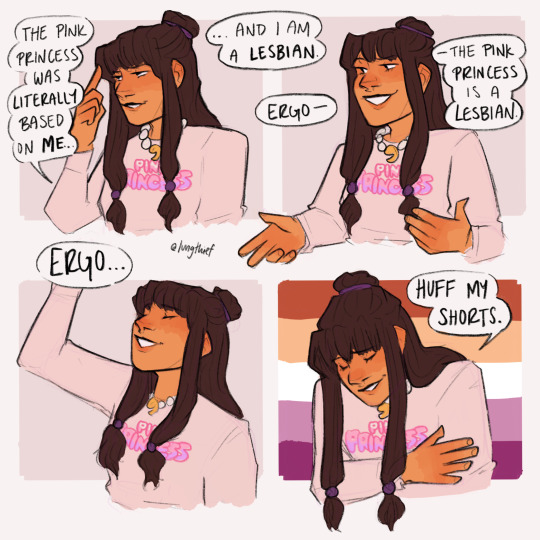

this isnt even funny i just wanted to draw miles and maya doing steel samurai discourse
#their shared love language is dunking on phoenix#also inspired by the fact that miles is canonically a pinksteel shipper#narumitsu#wrightworth#maya fey#miles edgeworth#phoenix wright#trucy wright#my art#ace attorney#comic
18K notes
·
View notes
Text

#this is so beautiful#i love the chinese languages and characters so much#from my understanding this would not be in a modern language that i could possibly read with standard chinese knowledge though#makes me wanna study chinese history and language history so bad ngl#language#art inspo#asia#games#peklo ref#fav
19K notes
·
View notes
Text
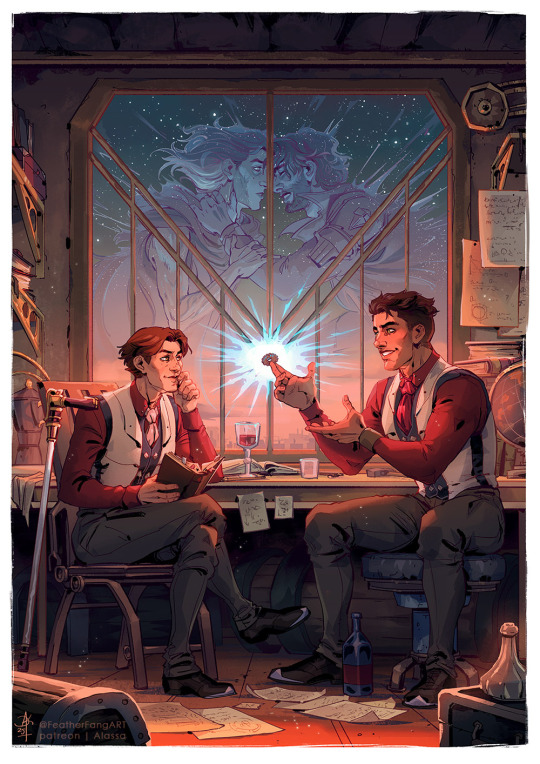
Two Sides Of the Same Coin
#jayvik#viktor arcane#jayce talis#arcane#arcane art#i'm sorry for not drawing the location and some things accurately#it was all for the sake of composition#and my own sake bc i love longe haired Viktor design sm#had a lot of fun with this one#it was insanely difficult#but had fun#their love language is nerding out so here they are nerding out#las!art
8K notes
·
View notes
Text
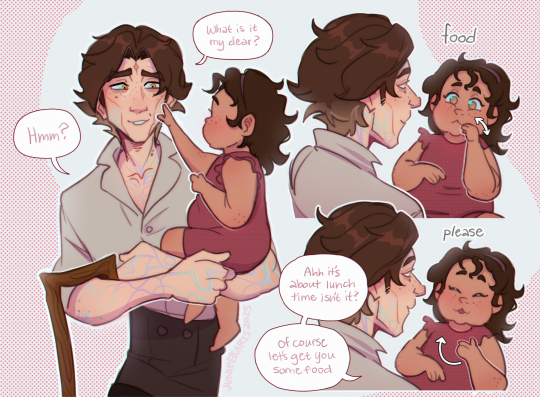

I like the idea of Viktor knowing some basic sign language & teaching it to his babies 🥹
#arcane#arcane fanart#jayvik#jayce talis#viktor#post canon#arcane viktor#arcane jayce#arcane season 2#arcane 2#jayvikling#jayvik lovechild#jayvik baby#sign language#my art
4K notes
·
View notes
Text











Writer Hilton Als has brought together a wonderful collection of works exploring art and language for The Writing’s on the Wall: Language and Silence in the Visual Arts at Hill Art Foundation. Quotes from several authors are included alongside the art, adding another dimension to the show.
From the gallery-
This group exhibition presents artists whose work explores the relationships between communication and language. In the curatorial text, Als explains: “for this exhibition, I wanted to show what silence looked like—at least to me—and what words looked like to artists.”
“Writing and erasure have been important sources of inspiration for many of the artists in my family’s collection, including Christopher Wool, Rudolf Stingel, Vija Celmins, and Cy Twombly,” says J. Tomilson Hill, President of the Hill Art Foundation. “Hilton Als has identified a fascinating motif and introduced important loans to illustrate the rich history of these lines of inquiry into the present day.”
In his accompanying essay, Poetics of Silence, Als probes the power of visual art to skirt the written or spoken word. The works included convey “the sense we have when language isn’t working,” evoke “EKGs of rhythm followed by silence, or surrounded by it,” reveal “painting as language’s subtext,” illustrate “what we mean to say as opposed to what gets said,” and “find beauty in the tools that one uses to erase words—and then to make new ones.” He reflects on his own entry into the art world as an art history student at Columbia in the 1980s, and his efforts as a writer and curator to create a democratic “language of perception” that transcends traditional connoisseurship.
The Writing’s on the Wall encompasses a range of mediums, from video installation to printed zine. Artists in the exhibition include Ina Archer, Kevin Beasley, Jared Buckhiester, Vija Celmins, Sarah Charlesworth, Ian Hamilton Finlay, Fang: Betsi-Nzaman, Ellen Gallagher, Joel Gibb and Paul P., Rachel Harrison, Ray Johnson, G.B. Jones and Paul P., Jennie C. Jones, Christopher Knowles, Willem de Kooning, Sherrie Levine, Judy Linn, Christian Marclay, Brice Marden, Agnes Martin, Claes Oldenburg, Ronny Quevedo, Irving Penn, Umar Rashid, Medardo Rosso, David Salle, Rudolf Stingel, Cy Twombly, Andy Warhol, Steve Wolfe, Larry Wolhandler, and Christopher Wool.
Als’ essay provides not only more information on the show and the art included, but also his own experience of learning about and experiencing art.
Below is a brief excerpt but it is well worth it to read the essay in its entirety.
Part of the experience I hope to evoke here draws a line between language, which is to say active contemplation, and being, which requires nothing more than your presence first and language second (or third). You know what being is. It happens to you all the time. You may be in a museum, or a public park, or sitting dully in your house, with “nothing” on your mind, and then there you are—a kind of walking phenomenology, language-free, but not feeling. In fact, you are suffused with feeling. Your feet are on the ground, and your body, released from the chatter of the everyday, is porous to the surrounding world with its various silences—a world where everything and nothing speaks to you. The clouds; some pictures on a white wall; a beautiful, hitherto-unknown sculpture reaching for eternity; that blank wall standing between you and the wonders of a garden that manages to grow right here in the middle of Manhattan—they all became part of your being, the self that is always on the verge of discovery, if only you can listen to its silences.
Silence says so much, if you listen. (From Marianne Moore’s 1924 poem “Silence”: “The deepest feeling always shows itself in silence; not in silence, but restraint.”) And since I have been a writer all my life, it’s a relief not to think in words sometimes, and to look at pictures, which do not so much deny verbalization but are without language, only the experience of here and now. Sometimes being simply means that we are somewhere, and we are porous to contemplation. When we think about visual culture or production, words aren’t the first things that come to mind. What does is the thing itself. And for this exhibition, I wanted to show what silence looked like—at least to me—and what words looked like to artists. The struggle to speak, to say, to reveal language or an attempt at language—communication—in a visual medium that has a complicated relationship to speech.
Als’ website includes his older writing ,but you can read more of his recent essays and reviews on The New Yorker’s website and he frequently posts on Instagram.
This exhibition closes 3/29/25.
#Hilton Als#Hill Art Foundation#Andy Warhol#NYC Art Shows#Art and Language#Art and Writing#Chelsea Art Galleries#Chelsea Art Shows#Christian Marclay#Ellen Gallagher#James Baldwin#Jennie C. Jones#Joan Didion#Judy Linn#Larry Wolhandler#Medardo Rosso#Ronny Quevedo#Rudolf Stingel#Silence#Steve Wolfe#Writers#Writing
1 note
·
View note
Text
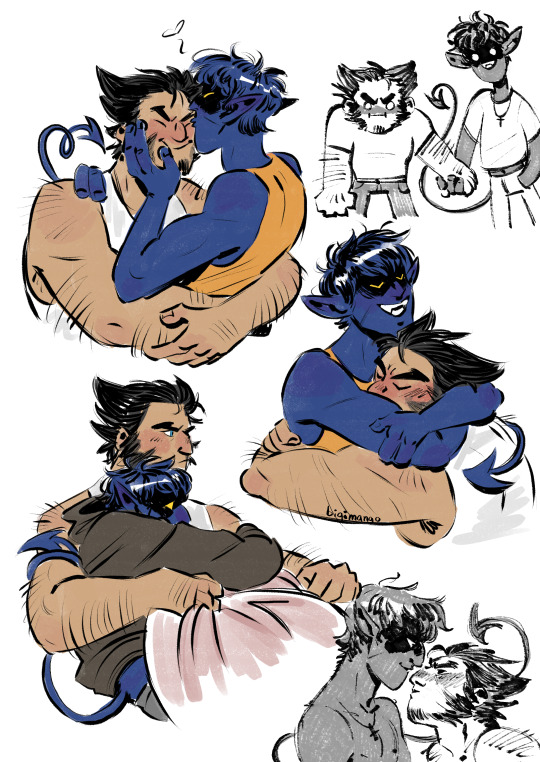
Some fluffy sketches~
#kurt wagner#nightcrawler#logan howlett#wolverine#logurt#x men#nightwolves#cuddles#both of their love language is touch#my art
10K notes
·
View notes
Text

Throwback to a piece i did for zukki week. just some besties chilling by the pond nothing to see here-
#i think the prompt was uhhh free space/kyoshi island?#probably not shotgunning dkfjg#even tho shotgunning Is a love language. to me#specialest of shoutouts to nENE'S LILYPAD FROG CAMEOO CREECHUR OF ALL TIMEEEE#zukki move aside shes the real star#zukki#suki#sokka#zuko#atla#my art#id in alt text#this was also referencing that pic of tory jade & beck from victorious that was circulating years ago y'kno the one-
4K notes
·
View notes